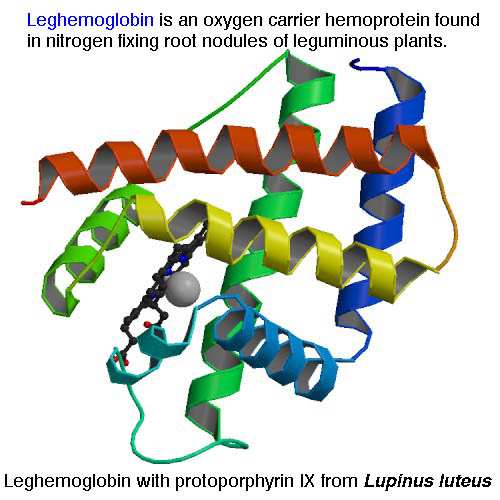Hemoglobins are heme
containing proteins,
capable of supporting reversible binding of oxygen.
They represent a widespread family of proteins found in animals, plants,
fungi and bacteria.
The
tertiary structure of these proteins appears to be
highly conserved suggesting commonality of
functions.
The basic role of hemoglobins
is closely related to the delivery of oxygen to
respiring tissues. Until recently, the knowledge
on plant hemoglobins was limited to the symbiotic
systems in which fixation of free nitrogen in plant
root nodules occurs (Appleby, 1984).
Leghemoglobins facilitate the diffusion of
oxygen to the bacteroids in the root nodule and at the
same time, by sequestering the oxygen, they prevent
the bacterial nitrogenase from being inactivated.
The
discovery of hemoglobins in cereals (Taylor et
al., 1994) and of a nonsymbiotic type hemoglobin
in soybean tissues (Andersson et al., 1996)
suggests that in plants the role of hemoglobins is not restricted to the
nodulation process.
back
